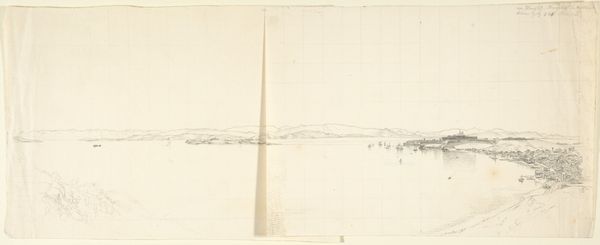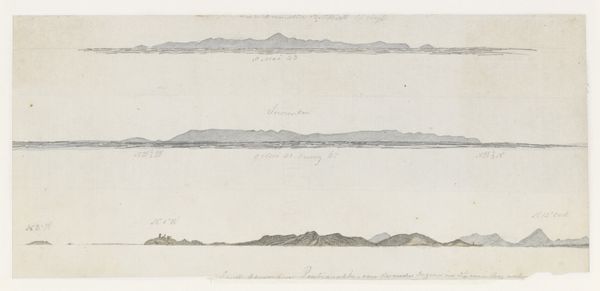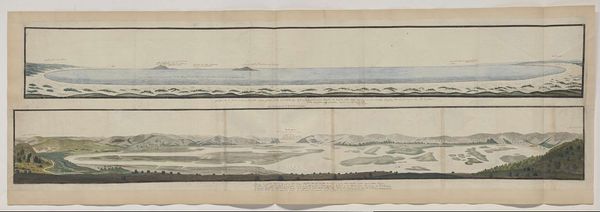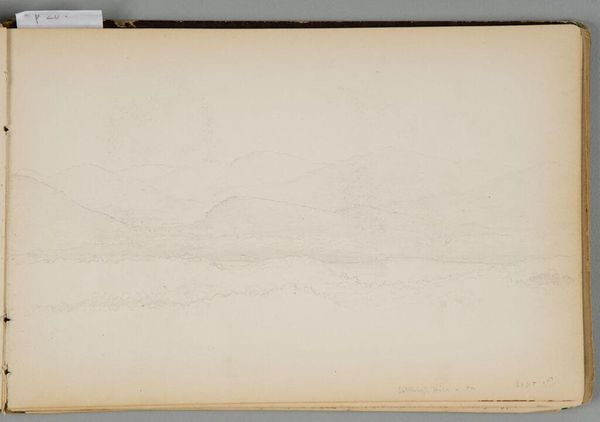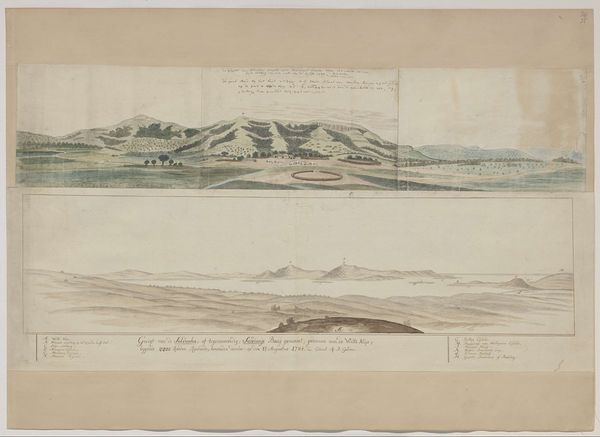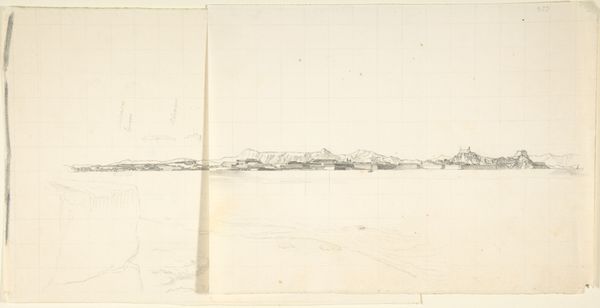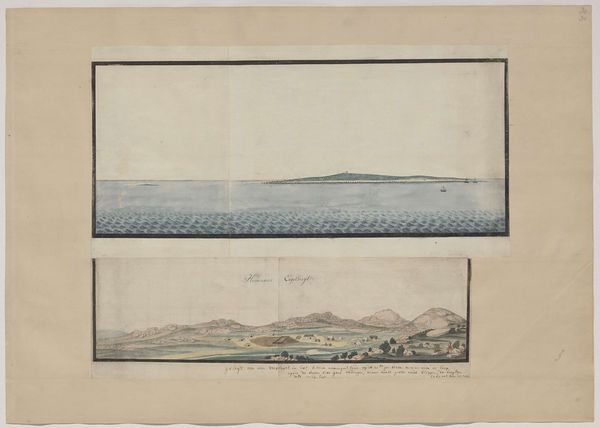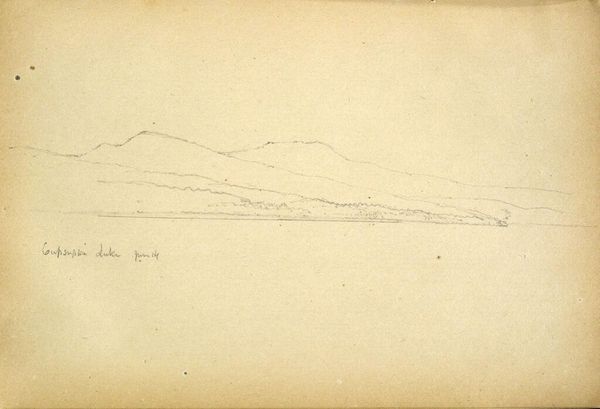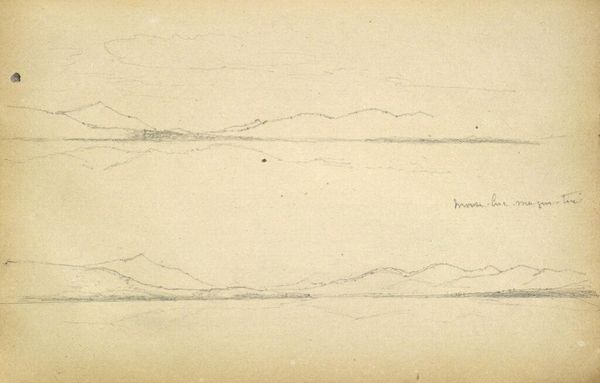
drawing, pencil
#
drawing
#
light pencil work
#
script typography
#
hand drawn type
#
landscape
#
hand lettering
#
personal sketchbook
#
hand-drawn typeface
#
fading type
#
pencil
#
15_18th-century
#
sketchbook drawing
#
sketchbook art
#
small lettering
Dimensions: height 266 mm, width 2100 mm, height 195 mm, width 2050 mm
Copyright: Rijks Museum: Open Domain
Curator: Robert Jacob Gordon likely created this pencil drawing, "Panorama of Mossel Bay, seen from the south east," around 1777 or 1778. The two landscape strips remind me a little bit of a geographical survey, like an effort to accurately document the terrain, a certain space, for perhaps political, military, or perhaps commercial intentions. Editor: Two horizon lines. Back-to-back oceans maybe? There's something haunting about those mountains, faint, nearly disappearing into the mist. It's the kind of view that whispers forgotten stories, histories yet untold...a pang of melancholic hope? I think I see figures there...are they ships on the water? Curator: Considering that Gordon was a commander in the Dutch East India Company, military intentions are likely intertwined. It is possible that the artist sketched those, for there seems to be a notation near those possible ships on the water, and it appears to have served, at least partially, a cartographic function. Let's remember how landscape imagery during that period often facilitated European colonial expansion. So how are the figures placed, and their relationship with the land? That should be the critical question here. Editor: Right. The drawing feels incredibly detailed and precise, though... Like an anthropologist meticulously capturing a disappearing world, before something changed forever...but isn't it the colonial gaze that dictates that perspective, that imposed interpretation? Or the need for the colonizer's perspective of wanting to understand what is "theirs"? So maybe it isn't as melancholy, as possessive? What would you make of that reading? Curator: Well, exactly! And the use of pencil suggests a preliminary, on-site mode of documentation, perhaps made directly in a sketchbook, offering us an intimate glimpse into the artist’s process as a traveler. These light pencil markings really allow the landscapes to unfold, one level after another, offering both a comprehensive overview and maybe more careful records of detail, particularly in the rendering of geographic landmass. Editor: I’d imagine him sitting there with the paper and pencil on hand trying to not let a thing slip him...but is this supposed control? I appreciate your highlighting the importance of thinking through the artist’s colonial power as intertwined, if not integral, with his vision and depiction of the landscape here. Thank you.
Comments
No comments
Be the first to comment and join the conversation on the ultimate creative platform.

